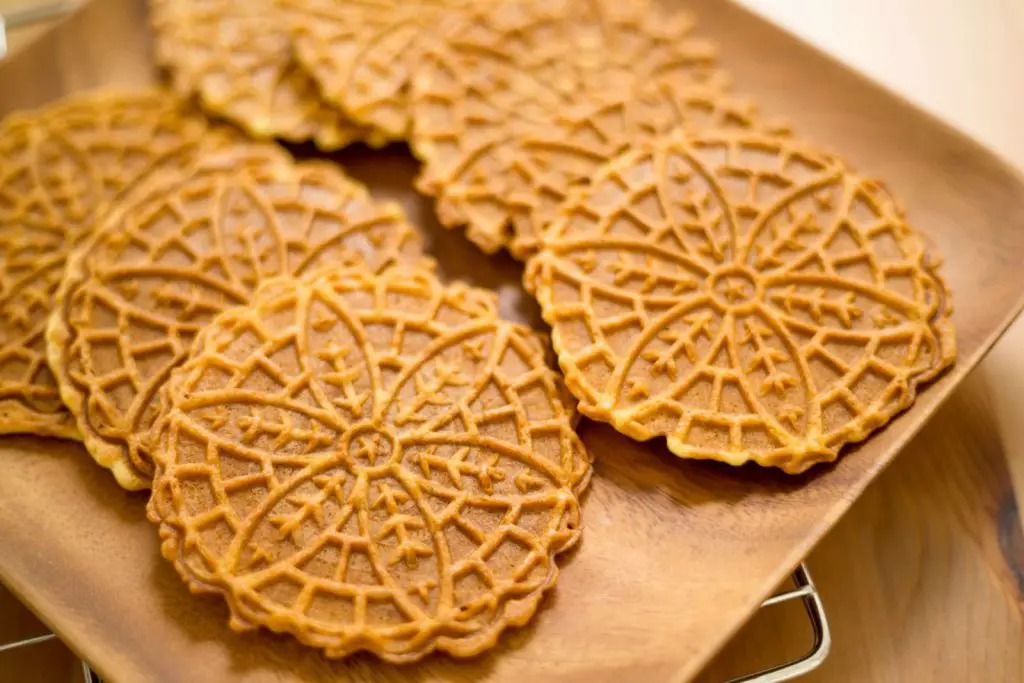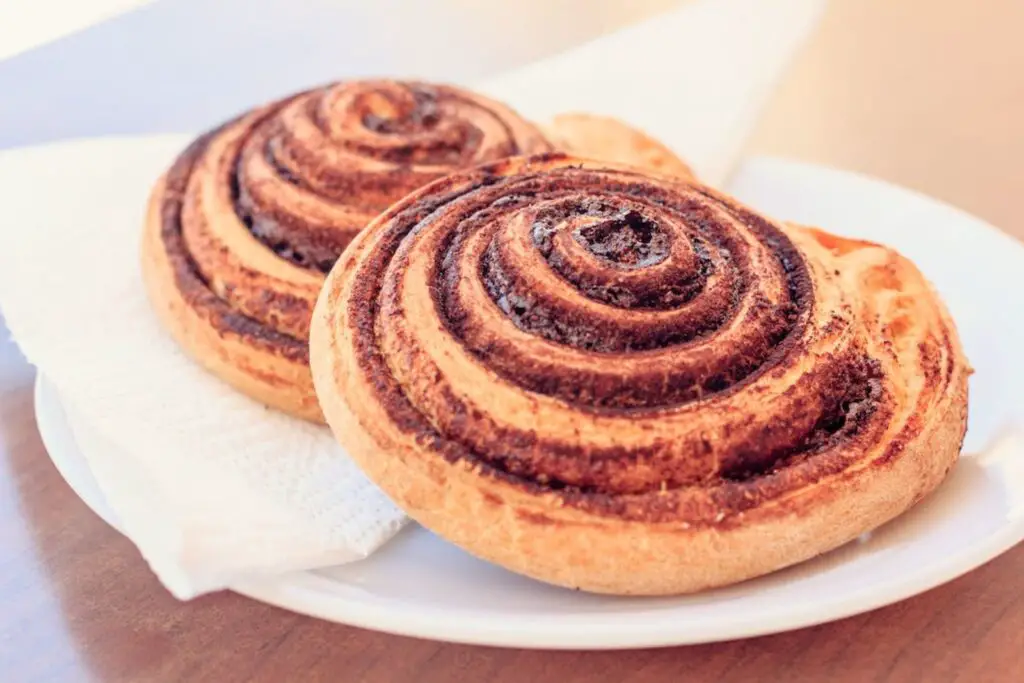
Cottage pie is a classic comfort food dish consisting of a savory meat filling topped with a layer of creamy mashed potatoes. It’s a hearty and satisfying meal that many people enjoy. If you find yourself with leftovers or simply want to prepare a large batch in advance, freezing cottage pie is a great option. Freezing allows you to extend the shelf life of this delicious dish and enjoy it at a later time. By following a few simple steps, you can freeze cottage pie while preserving its taste and texture. In this article, we will provide you with a step-by-step guide on how to freeze cottage pie effectively.
Here’s a guide on how to freeze cottage pie:
Step 1: Prepare the cottage pie
Before you can freeze cottage pie, it’s crucial to have a fully prepared dish. To begin, you’ll need to cook the meat filling and assemble the pie with the mashed potato topping. This step ensures that the pie is ready for freezing and will maintain its quality during storage.
First, cook the meat filling according to your preferred recipe. Cottage pie traditionally uses ground beef, but you can also use other meats like lamb or turkey. Brown the meat in a skillet, adding onions, garlic, and any desired seasonings or vegetables. Once the meat is cooked through and the flavors have melded, remove it from the heat and let it cool.
While the meat filling is cooling, prepare the mashed potato topping. Peel and boil potatoes until they are tender. Drain the potatoes and mash them with butter, milk, salt, and pepper to create a creamy texture. Make sure the mashed potatoes are smooth and free of lumps.
Next, assemble the cottage pie by spreading the cooled meat filling evenly in a baking dish. Spoon the mashed potatoes on top of the meat, spreading them out to cover the filling completely. You can use a fork to create decorative patterns or peaks on the surface of the mashed potatoes.
It’s important to note that the cottage pie should be fully cooled before proceeding to the freezing process. This allows the ingredients to settle and the flavors to meld together. Cooling also prevents condensation from forming inside the dish during freezing, which could negatively affect the texture and taste of the pie.
Once the cottage pie has cooled down completely, it’s ready to be frozen. Ensure that it reaches room temperature before proceeding with the freezing steps outlined in the subsequent sections. By following this initial step of preparation, you’ll have a fully assembled cottage pie that is primed for freezing, ensuring its optimal quality for future consumption.
Step 2: Portion the cottage pie
To effectively freeze and later thaw and reheat your cottage pie, it’s essential to divide it into individual portions. This step allows for convenient and efficient handling, as well as portion control based on your needs.
Start by deciding on the desired serving size for each portion. Consider the number of people you plan to serve and the typical appetite of each person. It’s generally recommended to portion cottage pie into individual servings that are suitable for one person.
Once you have determined the serving size, you’ll need appropriate containers for freezing. Small oven-safe containers or aluminum foil pans work well for this purpose. Ensure that the containers you choose are specifically labeled as freezer-safe and can withstand the temperature fluctuations associated with freezing and reheating.
Using a ladle or a large spoon, scoop the cottage pie into each container, dividing it evenly among them. Make sure to include both the meat filling and the mashed potato topping in each portion. Leave a small space at the top of each container to allow for expansion during freezing.
Alternatively, you can also use aluminum foil to wrap individual portions of the cottage pie. Simply place a portion of the pie in the center of a piece of aluminum foil, fold the sides over, and crimp the edges to seal it securely. This method provides flexibility and ease of storage.
Can I freeze a whole cottage pie instead of portioning it?
Yes, you can freeze a whole cottage pie instead of portioning it. However, keep in mind that freezing a whole pie will take longer to thaw and reheat compared to individual portions. It’s important to wrap the whole pie tightly to prevent freezer burn and consider dividing it into smaller portions before freezing for easier thawing and serving.
Step 3: Wrap and seal the portions
After portioning the cottage pie into individual servings, it’s crucial to wrap and seal each portion properly. This step is essential for maintaining the quality of the pie during freezing and preventing freezer burn, which can negatively impact the taste and texture of the dish.
To wrap the portions, you have a choice between using plastic wrap or aluminum foil. Both materials are effective at creating a barrier that protects the cottage pie from air and moisture, helping to preserve its freshness.
If using plastic wrap, tear off a piece large enough to completely cover the portion of cottage pie. Place the portion in the center of the plastic wrap and tightly fold the edges over, sealing it securely. Ensure that there are no gaps or air pockets left in the wrapping. This helps to prevent air and moisture from reaching the cottage pie, which can cause freezer burn.
Similarly, if using aluminum foil, tear off a piece that is sufficient to wrap around the portion of cottage pie. Place the portion in the center of the foil and fold the edges over, sealing it tightly. Again, make sure there are no openings or air pockets in the wrapping.
The key is to create a tight seal that protects the cottage pie from exposure to air and moisture. This helps to maintain its quality, flavor, and texture while in the freezer. By preventing air from reaching the cottage pie, you reduce the risk of freezer burn, which can lead to dryness and loss of taste.
Can I freeze cottage pie in individual ramekins or ceramic dishes?
Yes, you can freeze cottage pie in individual ramekins or ceramic dishes. Ensure that the dishes are freezer-safe and can withstand the freezing and reheating process. It’s recommended to wrap each dish tightly with plastic wrap or transfer the pie to airtight freezer bags to provide additional protection against freezer burn.
Step 4: Label and date the packages
Once you have wrapped and sealed each portion of cottage pie, it’s essential to label and date the packages. This simple step plays a crucial role in keeping track of the freezing and thawing times, ensuring that you consume the cottage pie within a reasonable period.
Using a marker or adhesive labels, clearly indicate the contents and the date on each wrapped portion. Include information such as “Cottage Pie” and the date of preparation. This labeling practice helps you easily identify the cottage pie in the freezer and determine its freshness when you decide to thaw and consume it.
By labeling the packages, you create a system that allows you to organize your freezer and keep track of the cottage pie portions. It helps you avoid confusion and ensures that you can prioritize consuming the oldest portions first.
Additionally, by including the date on the packages, you have a reference point for how long the cottage pie has been stored in the freezer. This information is crucial for maintaining food safety and quality. Cottage pie generally retains its best quality for about 2-3 months when properly frozen, although it can be safely consumed beyond that time.
By following a “first in, first out” approach based on the dates, you can ensure that you consume the cottage pie before it exceeds its recommended storage duration. This practice helps you avoid wasting food and allows you to enjoy the cottage pie at its best quality.
Step 5: Arrange the portions in the freezer
After wrapping and labeling each portion of cottage pie, it’s time to arrange them in the freezer for optimal storage. How you arrange the portions can impact their freezing and thawing process, as well as the overall organization of your freezer space.
Start by placing the wrapped portions of cottage pie in the freezer in a single layer. This initial arrangement allows for proper air circulation around each portion, which helps facilitate the freezing process. It ensures that the cold air can reach all sides of the wrapped portions, freezing them evenly and efficiently.
It’s important to leave enough space around each portion to allow for air circulation. This helps maintain a consistent freezing temperature and prevents the portions from sticking together. Leaving space also allows for easier removal of individual portions when you’re ready to thaw and reheat them.
If you’re freezing multiple portions and have limited freezer space, you can stack them on top of each other once they are partially frozen. As the portions freeze, they become more solid and hold their shape, making it easier to stack them without the risk of deformation. Just ensure that the portions are securely wrapped and stable in the freezer to prevent any accidental spills or damage.
When stacking the portions, it’s still important to maintain some space between them to allow for adequate airflow. This helps maintain a consistent freezing temperature and prevents the portions from freezing together.
Properly arranging the portions of cottage pie in the freezer ensures that they freeze evenly, maintain their shape, and are easily accessible when needed. It also allows you to make the most efficient use of your freezer space, maximizing storage capacity for other items.
Step 6: Freeze the cottage pie
After arranging the portions of cottage pie in the freezer, it’s important to allow them to freeze completely. This step is crucial for ensuring that the pie is properly preserved and maintains its quality during storage.
The freezing process may take a few hours or overnight, depending on the size and thickness of the cottage pie portions. Thicker portions may take longer to freeze compared to smaller or thinner ones. It’s essential to give the cottage pie enough time to freeze completely, ensuring that it reaches a solid, frozen state.
During freezing, the moisture inside the cottage pie portions turns into ice crystals. Freezing the pie solid helps lock in the flavors, texture, and overall quality of the dish. It also prevents the growth of microorganisms that can cause food spoilage.
Once the cottage pie is frozen solid, you can rearrange the portions if needed to maximize freezer space. If you have limited freezer space or need to make room for other items, you can stack the portions more efficiently or reorganize them to create additional space.
When rearranging the portions, ensure that they are securely wrapped and stable to avoid any accidental spills or damage. It’s important to maintain proper labeling and date information on each portion to avoid confusion or mixing up different batches of cottage pie.
By allowing the portions to freeze completely and organizing them to maximize freezer space, you ensure that the cottage pie remains in optimal condition for an extended period. This step sets the foundation for long-term storage, allowing you to store the cottage pie for several months while retaining its taste and texture.
Remember to handle the frozen portions with care to avoid any breakage or damage. Properly freezing the cottage pie gives you the flexibility to enjoy it at your convenience, as the frozen portions can be stored for an extended period without compromising their quality.
Step 7: Store in the freezer
After the portions of cottage pie have frozen completely, it’s time to transfer them to airtight freezer bags or containers for long-term storage. This step provides an additional layer of protection and helps maintain the quality of the pie during its time in the freezer.
Airtight freezer bags or containers create a barrier that prevents air and moisture from reaching the cottage pie portions. This barrier is crucial for avoiding freezer burn, which can negatively affect the taste and texture of the pie over time. Freezer burn occurs when moisture evaporates from the food, leading to dryness and a change in flavor.
When using freezer bags, choose ones specifically designed for freezing to ensure they are durable and can withstand low temperatures. Place each portion of the cottage pie into a separate bag, ensuring that they are securely sealed to prevent any air or moisture from entering. It’s important to remove as much excess air as possible from the bags before sealing them. You can use the “close to seal” method or a vacuum sealer to accomplish this. Removing excess air helps minimize the risk of freezer burn and maintains the quality of the cottage pie.
Alternatively, if you opt for freezer-safe containers, ensure they have tight-fitting lids that create a proper seal. Place each portion of the cottage pie in a separate container, leaving a small gap at the top to account for expansion during freezing. Seal the containers tightly to prevent air and moisture from entering.
Label the freezer bags or containers with the date and contents to easily identify the cottage pie portions and keep track of their storage time. Proper labeling ensures that you consume the oldest portions first and avoid wasting food.
Remember to place the labeled bags or containers in an organized manner in the freezer, making it easier to locate specific portions and optimize freezer space.
How long can I store frozen cottage pie?
Frozen cottage pie can be stored for approximately 2-3 months while maintaining good quality. After this time, the pie may still be safe to eat, but the taste and texture may deteriorate. It is recommended to consume the frozen cottage pie within the recommended storage duration for the best culinary experience.
Step 8: Thaw and reheat
When the time comes to enjoy your frozen cottage pie, it’s important to thaw and reheat it properly to ensure both food safety and the best taste and texture. Here’s a step-by-step guide on how to thaw and reheat your cottage pie:
- Remove the desired portion: From the freezer, take out the portion of cottage pie you wish to thaw and enjoy. Leave the rest of the portions in the freezer for future use.
- Thaw in the refrigerator: Place the portion of cottage pie in the refrigerator to thaw overnight. Thawing in the refrigerator is the safest method as it keeps the pie at a controlled temperature, minimizing the risk of bacterial growth. Thawing times will vary depending on the size and thickness of the portion, but it generally takes about 24 hours for a cottage pie portion to thaw completely.
- Reheat in the oven: Once the cottage pie portion has thawed, you can proceed with reheating. Preheat your oven to a moderate temperature, typically around 350°F (175°C).
- Transfer to an oven-safe dish: Place the thawed cottage pie portion into an oven-safe dish. This allows for even heating and ensures that the pie retains its shape and texture.
- Heat until heated through: Put the dish with the cottage pie into the preheated oven and heat until it’s thoroughly heated. The internal temperature of the cottage pie should reach 165°F (74°C) to ensure food safety. Use a food thermometer to check the temperature at the thickest part of the pie.
- Monitor for doneness: Keep an eye on the cottage pie as it reheats to prevent it from drying out or burning. Depending on the size and thickness of the portion, reheating can take around 20-30 minutes, but times may vary. The pie is done when the filling is hot and bubbling, and the mashed potato topping is golden and slightly crispy.
- Let it rest and serve: Once the cottage pie is heated through, remove it from the oven and allow it to rest for a few minutes. This resting time helps the flavors to settle and makes it easier to handle. Serve the cottage pie while it’s still warm and enjoy!
Other related questions
Can I refreeze cottage pie?
No, it is generally not recommended to refreeze cottage pie once it has been thawed. Refreezing can negatively impact the quality and safety of the dish. Thawed cottage pie should be consumed or reheated and then stored in the refrigerator for a limited time.
How do I know if the cottage pie has gone bad after being frozen?
To determine if cottage pie has gone bad after being frozen, first examine its appearance. Look for signs of freezer burn, such as discoloration or dry patches on the surface. Secondly, trust your senses—smell the pie to check for any off or rancid odors. Lastly, if the texture or taste seems significantly different or unpleasant, it is best to discard the cottage pie to avoid potential foodborne illnesses.
Can I freeze cottage pie with a pastry crust on top?
Yes, you can freeze cottage pie with a pastry crust on top. However, keep in mind that the texture of the pastry may change slightly upon thawing and reheating. It is recommended to wrap the pie tightly and consider reheating it in the oven to help preserve the pastry’s texture.
Can I freeze cottage pie that contains dairy-based ingredients?
Yes, you can freeze cottage pie that contains dairy-based ingredients like milk, butter, or cheese. However, keep in mind that the texture and consistency of the dairy may change slightly upon thawing and reheating. Consider reheating the pie in the oven to help preserve the desired texture.
Can I freeze cottage pie without baking it first?
Yes, you can freeze cottage pie without baking it first. Prepare the pie as usual, but instead of baking, wrap it tightly with plastic wrap or transfer it to an airtight freezer-safe container. This allows you to freeze the unbaked cottage pie and bake it at a later time for a freshly baked result. Adjust the baking time accordingly when reheating the frozen unbaked pie.
Can I freeze cottage pie made with alternative ingredients, such as vegetarian or vegan substitutes?
Yes, you can freeze cottage pie made with alternative ingredients. Whether it’s a vegetarian cottage pie with plant-based proteins or a vegan cottage pie with dairy-free alternatives, the freezing process remains the same. Ensure that the ingredients used are suitable for freezing and follow the recommended freezing and reheating guidelines.
Can I freeze leftover cottage pie that has been sitting at room temperature?
No, it is not safe to freeze leftover cottage pie that has been sitting at room temperature for an extended period. Leaving the pie at room temperature allows for the growth of bacteria, which can lead to foodborne illnesses. It’s best to refrigerate the leftovers promptly and then freeze them within a safe time frame.
Can I freeze cottage pie with added vegetables?
Yes, you can freeze cottage pie with added vegetables. Vegetables like carrots, peas, corn, or mushrooms can be included in the meat filling or layered within the pie. Ensure that the vegetables are properly cooked before assembling the pie and follow the recommended freezing and reheating instructions.








